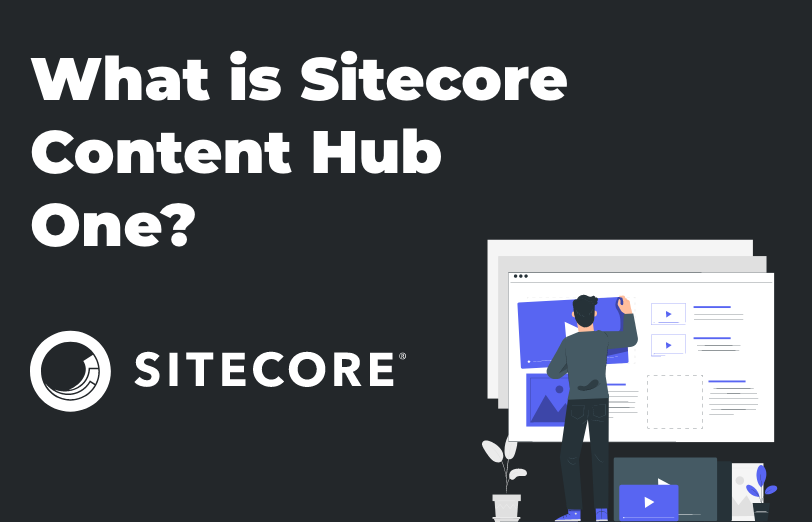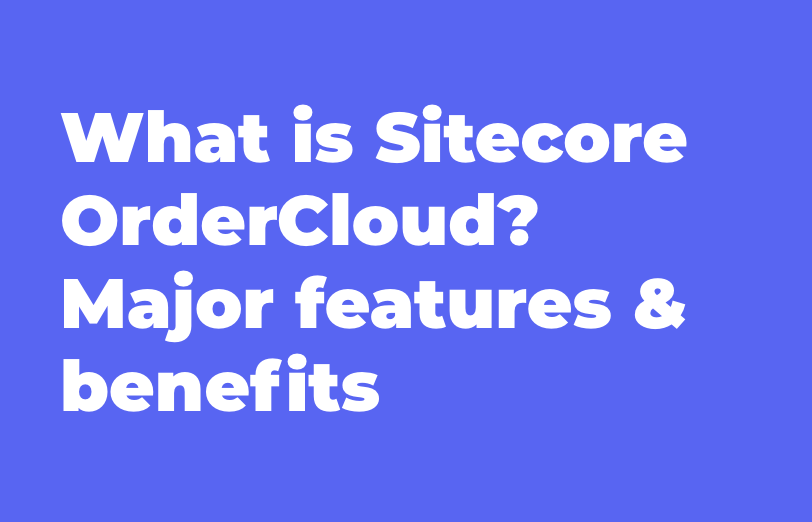In today’s digital age, Content is the KING! Managing content efficiently is crucial for
organizations and businesses that aim to stay ahead in this market with cut-throat competition.
One emerging solution for this is the Sitecore Content Hub DAM.
Sitecore Content Hub DAM provides a centralized platform to
streamline the entire content
lifecycle of your organization. Through this blog, we will explore the importance of an
effective content lifecycle, the challenges that are faced by organizations with this and how
Sitecore Content Hub DAM can be a game-changer in this.
What is the Content Lifecycle?
It is a journey that starts from the creation of content to when it is retired. It involves
stages such as creation, approval, distribution, archival. Each of the stages plays a vital role
to ensure that the content is efficient, effective and relevant.
1. Creation
This involves ideation, content development, and the initial gathering of digital assets. Whether
it's text, images, videos, or other media types, managing these assets effectively from the
start is crucial to maintaining consistency and quality in your content.
2. Approval
This stage involves collaboration among various stakeholders, including content creators, subject
matter experts, and management. Efficient approval processes are essential to ensure that
content meets quality standards, aligns with brand guidelines, and complies with any regulatory
requirements.
3. Distribution
This stage is all about delivering content to various channels and platforms, such as websites,
social media, email campaigns, and more. Effective distribution ensures that the right content
reaches the right audience at the right time, maximizing its impact.
4. Archival
As content ages or becomes obsolete, it needs to be archived or retired. Archiving is crucial for
compliance, resource optimization, and maintaining a clean and organized content library. Proper
archiving practices also contribute to better performance and ease of content management.
Also, archival is important for when you want to reuse old content or repurpose it for any
campaigns.
What are the challenges of the Content Lifecycle?
Fragmented systems
Content is often scattered across various platforms and departments, making it challenging to
maintain consistency and coordination throughout the content lifecycle.
Inefficient approval process
Approval processes can become bottlenecks, leading to delays in content delivery. Inefficient
workflows, manual reviews, and lack of visibility into the approval status can hinder the timely
release of content.
Poor asset management
Digital assets, such as images and videos, are central to content creation. Inadequate asset
management systems make it difficult to locate, reuse, and repurpose assets efficiently. This
results in redundant efforts, decreased productivity, and potential inconsistencies in branding.
Lack of analytics
Without proper analytics, organizations may struggle to measure the performance of their content,
identify successful strategies, and make data-driven decisions.
How can Sitecore Content Hub DAM help?
Sitecore Content Hub DAM facilitates efficient content creation by providing a centralized
platform for collaboration. Content creators can access a unified workspace where they can
ideate, develop, and organize content seamlessly.
The platform supports various media types, ensuring that all digital assets are managed in one
place.
Some of the key features for content creation offered by Sitecore Content Hub DAM are:
-
Centralized workspace
-
Multimedia support
-
Version control
Another one of the strengths of Content Hub DAM is how it offers customizable workflows that can
be tailored to an organization's specific needs. This ensures that approval processes are
efficient, transparent, and tailored to the organization's unique requirements.
Sitecore Content Hub DAM offers features for workflows that include:
-
Customizable workflows
-
Automated notifications
-
Audit trails
Talking about distribution, the Content Hub DAM supports seamless content distribution across
various channels and platforms. It integrates with Sitecore Experience Platform, allowing
organizations to deliver content to websites, mobile apps, social media, and other digital
touchpoints.
Key features for this distribution and publishing functionality are:
Sitecore Content Hub DAM of course, excels in digital asset management, providing a robust system
for organizing, tagging, and retrieving assets. This empowers content creators to efficiently
locate and reuse assets, reducing redundancy and ensuring brand consistency.
There are also features that allow you to do integrations with analytics platforms, access to key
performance metrics, and reporting dashboards.
This enables organizations to make data-driven decisions and continuously optimize their content
strategies.
Conclusion
Sitecore Content Hub DAM emerges as a comprehensive solution, addressing the challenges
associated with content creation, approval, distribution, archival, asset management, and
analytics.
By leveraging the features and capabilities of Sitecore Content Hub DAM, organizations can
streamline their content workflows, enhance collaboration among stakeholders, and deliver
impactful content across various channels
As the digital landscape continues to evolve, embracing innovative solutions like Sitecore
Content Hub DAM becomes a strategic move for organizations aspiring to stay ahead in the content
game.
BACK TO SERVICE LIST
Sitecore Module Development Add new features, extend new features, or even replace, supplement and provide new functionality to Sitecore. Sitecore CMP & MRM Through the Sitecore CMP & MRM, drive execution, workflow, operations and processes of your entire marketing team. Sitecore Ordercloud Create a dynamic eCommerce platform and future-proof your business for B2B, B2C, B2X or any other marketplace business model. Sitecore Discover Provide real-time, personalized search results and recommendations for every individual shopper, all in one place.
MAIN MENU














